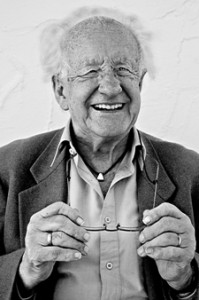Twenty pious wishes for 2016: Mind the minds
By Johan Galtung
According to UNESCO, wars start in the minds of men. Well, something–like unsolved conflicts and unconciled traumas–passes minds on the way to war. But UNESCO got the unintended focus on male humans right.
Minds matter, above all pre-programmed minds. This New Year 2016 editorial minds minds and mind-sets, the set minds. For peace culture.
1. A case: New York Times editorial 30 Dec 2015, “The Importance of Retaking Ramadi”. Being the capital of a governorate–IS uses them as building blocks–this was a major military victory. However, the mind-set of the writer confuses retaking space with retaking minds. Sunni Arab minds. “Liberated” by a Shia army and infidel US bombs? They might even be against both. The military come and go. Minds often stay.
2. Can we map minds? Well, to standard world maps with 200 states at least add maps of 2000 nations, showing those who would like to be more together, like in federations and confederations, and less, more apart, like in states. Nations are more cultural. Closer to “mind”.
3. The military have maps of hardware capability; “hammers in search of nails”. An example of intention: Pentagon had in the early 1960s “Project Camelot” to map with public opinion data revolutionary ideas. At least add maps of capacity for doing good to others, not only harm.
4. Andrew Korybko has a deep and comprehensive “2016 Trends Forecast, Mega-Analysis“. His basic perspective: “Russia, China and Iran are endeavoring to change the global system, the US and the Lead From Behind proxies ferociously fighting to retain it”. This is certainly going on.
But there is a mind-set in search of the single perspective, like Marx’ “ownership of means of production”, Lin Biao’s “world countryside vs world city”, US “democracy and free market”. “Mega” blocks for other perspectives, above all for macro, meso and micro level conflicts. All conflicts are born equal, and have the same right to peaceful solutions.
5. Maps focus on space, and tend to freeze in space a moment in time. We need spacetime maps, histomaps, which show past changes and indicate possible future changes to mirror processes. Peace is a process.
6. Maps focus on regions, states, provinces, local authorities. We need relational maps–not “area studies” but relations between areas–to map reality. Like violence and conflict, peace is a relation.
7. It helps greatly if the mind-set equating conflict with “trouble, violence” yields to seeing conflict as incompatible goals. The former leads to changing the other–conversion, therapy, incapacitation, killing, victory–the latter to search for compatibility, solutions–thereby removing major causes of violence.
8. It helps greatly to distinguish between ends and means. The ends may be legitimate but the means not, and vice versa. Providing for one’s family is legitimate, slavery as means, not. Struggle for peace is legitimate, hegemony as end, not. In addition: the means must be adequate.
9. It helps greatly if to the mind-set “to make legitimate goals compatible change them, compromise” could be added “to make legitimate goals compatible create a new, more accommodating reality“.
10. It helps greatly with less focus on “good chemistry” between the parties and more on creativity in all of them. Good relations may make them agree on non-solutions, short of “peace by peaceful means”.
11. It helps greatly if the idea “I have a goal and pursue it” is generalized to “so do others”. The problem is not having goals and pursuing them, but their possible incompatibility. For that knowing own goals and those of others–not assuming them–is indispensable.
12. It helps greatly with a dialogue Self-Other to explore goals and (in)compatibilities directly, or indirectly with a mediator; not using anti-talk like communist, terrorist, jihadist, imperialist, Western.
13. It helps greatly to know that there is more than “I prevail”, “you prevail”, “compromise”; there are also neither-nor and both-and.
14. It helps greatly if the idea that “we create new history” is generalized to “so did others”. Like us, they hoped to set humanity on a new course. The shadows of their creativity in history are long, more easily seen by victims than perpetrators. As will ours.
15. It helps greatly if the focus for democracy is less on elections for party and parliament rule, and more on the structure of direct democracy, and more on the culture of transparency.
16. It helps greatly to realize that carving out colonies, decolonize them to states, demanding democracy, is naive. First (con)federations with nations that want to be together. Then democracy in each part.
17. It helps greatly to realize that individual minds, debates, and individual voting presuppose an I-culture, and that many, perhaps most live in we-cultures with shared decisions, dialogues and consensus.
18. It helps greatly to realize that force is only one source of power, so is money. There are ideas, more or less compelling visions, the human right to life with dignity, and the human wrong of killing. And decisions, by debate and voting and-or by dialogue and consensus.
19. It helps greatly to realize that much military hardware and-or money predispose for (threats of) violence and bribery, and less for ideas and visions; and that smaller powers, NGOs, individuals short of hardware and money may be predisposed for conflict solution and peace.
20. And it helps to realize that there are always two goals: a more peaceful reality, and arrived at peacefully, Peace by peaceful means.
Nothing italicized above is idealistic, unrealistic, esoteric; they are much more realistic than the negations of these pious wishes. But the negations are strong, like Trump’s vulgarity followed by many.
Empirically, the West is often on the wrong side. Nevertheless, as anything empirical, it is subject to the law of change. Westerners are not slaves of the violent mind-sets in the Iliad and Beowulf spanning Europe.
The liberation is overdue.
By minding the minds.
Originally published at Transcend Media Service here.
